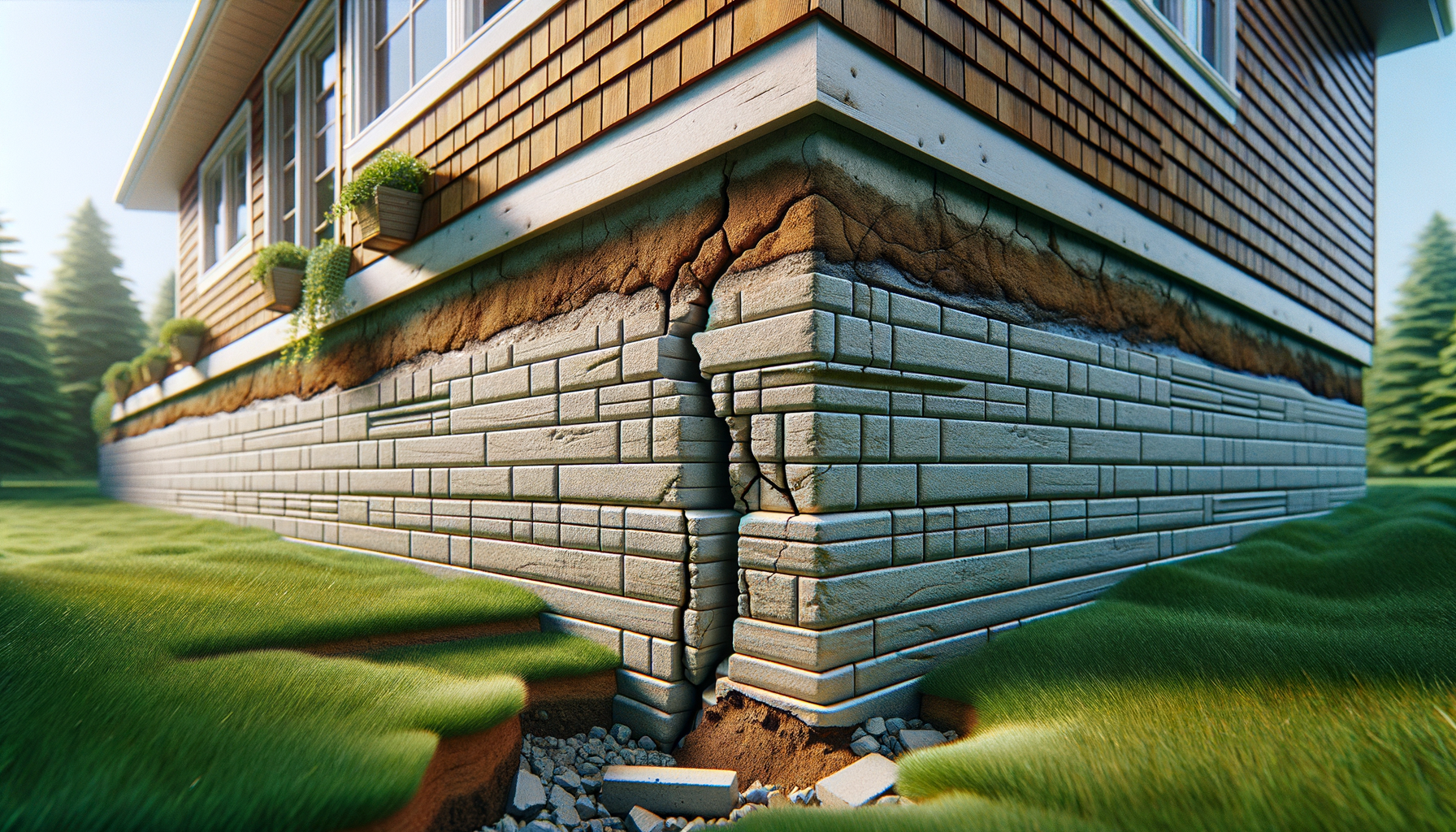Your home’s foundation is really important. Knowing the signs that it’s settling and fixing them quickly can save you a lot of trouble. This guide will help you understand what to look for and what to do if you need to repair your foundation.
Signs Your Foundation is Settling
Cracks in Walls and Floors
- Horizontal and Vertical Cracks
- These can appear in drywall, bricks, or concrete. Horizontal cracks are usually more serious and could mean big problems.
- Stair-Step Cracks in Brick or Concrete
- These look like zigzag patterns in brick or concrete and show that your foundation might be moving.
Uneven Floors
- Sloping or Sagging Floors
- If your floors are no longer flat, it could mean your foundation is sinking unevenly.
- Difficulty in Opening or Closing Doors and Windows
- When doors and windows stick or don’t close properly, it might be because the frames are crooked from foundation movement.
Gaps Around Window and Door Frames
- Visible Spaces Between Frames and Walls
- Gaps can form when the foundation moves, pulling walls away from window and door frames.
- Doors and Windows That No Longer Latch Properly
- If doors and windows don’t lock right, it’s a sign that something might be wrong with your foundation.
Why Does Foundation Settling Happen?
Soil Movement
- Expansive Soils
- Some soils expand when wet and shrink when dry, causing the foundation to move.
Water Damage
- Poor Drainage
- Bad drainage systems can cause water to pool around the foundation, making the soil weak.
- Leaking Plumbing or Flooding
- Water from leaks or floods can wash away soil under your foundation.
Poor Construction
- Low-Quality Materials
- Foundations made with poor materials can settle more easily.
- Inadequate Support During Build
- If the foundation wasn’t built right, it might settle over time.
How to Check If Your Foundation is Settling
Visual Inspection
- Look for Cracks and Gaps
- Check walls, floors, and around windows and doors for cracks and gaps.
- Use a Level to Check Floors
- Place a level on your floors to see if they are tilted.
Simple Tests
- Ball Test
- Place a ball on the floor and see if it rolls. If it does, your floor might be uneven.
- Measuring Crack Width
- Use a measuring tape to see how wide the cracks are. Anything wider than 1/4 inch is a concern.
Monitoring Over Time
- Keep a Log
- Write down any changes you see over time.
- Use Monitoring Devices
- Install gadgets that can help you track any movement in your foundation.
Professional Solutions for Foundation Settling
Mudjacking and Slabjacking
- How It Works
- These methods involve injecting a mix under the foundation to lift it back up. Good for minor to moderate settling.
Piers and Underpinning
- Different Types
- There are various types of piers, like helical or push piers, that are used to support the foundation.
- Benefits
- Piers can be a long-term fix but they can be expensive and need professionals to install.
Soil Stabilization
- Chemical Grouting
- Chemicals are pumped into the soil to make it stable.
- Cost and Effectiveness
- It’s usually a quick and cost-effective solution but might not work for all soil types.
How to Find the Right Foundation Repair Contractor
Experience and Credentials
- Certifications and Experience
- Make sure the contractor has the right certificates and has been doing this work for a long time.
Customer Reviews and References
- Online Reviews
- Read reviews on different websites to get a good idea of the contractor’s reputation.
- Ask for References
- Talk to past clients to see if they were happy with the work.
Warranty and Guarantees
- Repair Guarantee
- Make sure the contractor offers a good warranty that covers both materials and labor.
- Transferable Warranties
- A warranty that can be transferred to new homeowners is great if you decide to sell your home.
Keeping Your Foundation in Good Shape
Proper Drainage
- Gutters and Downspouts
- Make sure your gutters and downspouts are working well to move water away from your foundation.
- Grading Around the Home
- Ensure the ground slopes away from your home to keep water from pooling around the foundation.
Regular Inspection
- Set Up a Schedule
- Check your foundation regularly for any signs of settling.
- What to Look For
- Look for new cracks, gaps, and water damage.
Routine Maintenance
- Fix Small Cracks Quickly
- Repair small cracks right away so they don’t get worse.
- Watch Your Landscaping
- Keep trees and big plants away from your foundation to avoid root damage.
Frequently Asked Questions About Foundation Settling Repair
What is the Average Cost of Foundation Settling Repair?
- Factors Affecting Cost
- How bad the problem is, what type of repair is needed, and where you live can all affect the cost.
How Long Does Foundation Repair Take?
- Duration
- Small repairs can take a day, while big projects might take several weeks.
Can Foundation Settling be Prevented?
- Preventative Measures
- Regular inspections, good drainage, and fixing small problems quickly can help prevent settling.
Taking Action Early
Fixing foundation issues quickly can save you money and prevent more damage. If you see signs of settling, call a professional to check it out and make repairs. Early action is key to keeping your home safe and strong.
This article is made simpler and easier to understand, focusing on important words like "foundation settling repair," "uneven floors," "signs of foundation settling," "causes of foundation settling," and "foundation repair contractor."


Leave a Reply